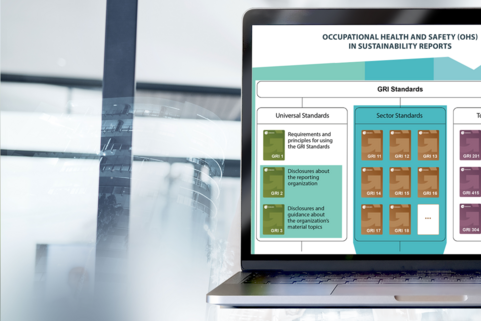Occupational health and safety (OHS) is a crucial topic when it comes to corporate sustainability. A solid understanding of the link between the two is essential if you want to move occupational health and safety even further up your company’s agenda.
But where in a sustainability report is it suitable to address OHS? This article outlines where you should enter information and indicators on occupational health and safety and the role of specific Sector Standards. Our infographic clearly summarizes the current state the GRI Standards (GRI 2021) following the introduction of restructured, revised, and supplemented standards as of January 1, 2023.






